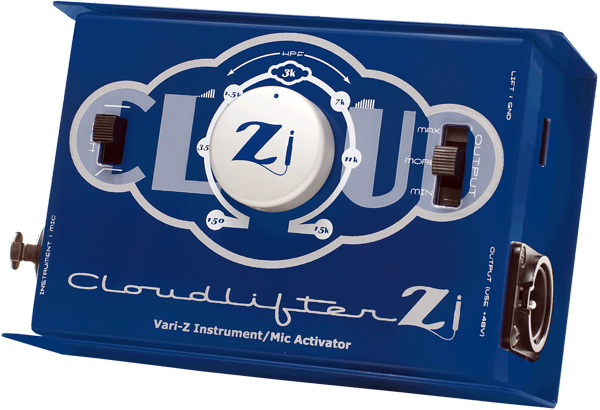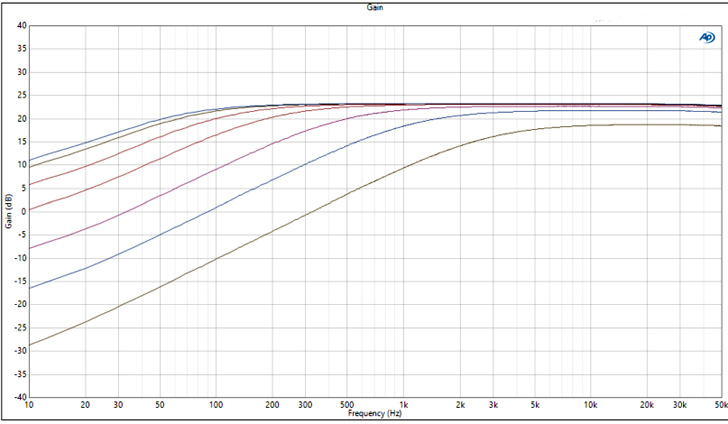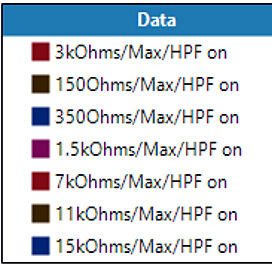|
|
Cloud Microphones Cloudlifter CL-Zi Instrument/Mic Activator
|
|
|
 |
| Cloud Microphones Cloudlifter CL-Zi Instrument/Mic Activator |
With lower level mic output sources and/or recording very quiet sounds, a typical console mic pre-amp or interface mic input gain is nearly maxed out with concomitant problems such as gain stability, increased noise floor, and a constrained dynamic range. Extra gain is useful for amplifying the low output levels from moving coil and ribbon dynamic mics such as Shure SM7B or Electro-Voice's RE20, or vintage ribbon microphones.
Like the original Cloudlifter units (the CL-1, CL-2, and CL-4 models) the CL-Zi also provides up to 25dB of gain from a discrete Class-A N-Channel JFET-based amplifier (two LSK389F monolithic FET pairs) inside the Zi's all steel box. A slide switch selects between three different levels of gain called: Min, More, Max. The CL-Zi is 48-volt phantom-powered but phantom is not passed to its Neutrik XLR microphone Combo input connector.
The CL-Zi has a single control knob that continuously varies its input impedance from 150-ohms to 15k-ohms to load or unload the output (source) impedance of a connected microphone or the DI input. Loading the microphone or instrument's source impedance presented to the microphone pre-amp opens up a whole new set of tonal "character" options and is unlike using any equalizer.
When the 1/4-inch direct input path is used for guitar or bass, you now can change the load impedance on the instrument's passive pickups and greatly change both the tone, feel and playing dynamics of the instrument.
The CL-Zi also has a -6dB/octave high pass filter available. When its slide switch is on, the Zi control knob now also sets the HPF roll-off frequency from 70Hz (at the 15k-ohm position) to 4kHz (150-ohms position). Using the HPF along with changing impedance at the same time is another great tone shaping feature that I found very useful when recording nearly any source.
 |
| CL-Zi HPF Curves-100-ohms Source Impedance, 3K-ohm Mic Pre-Input Impedance |
I began testing the Cloudlifter CL Zi with it located next to my listening position here at my studio but it can be placed anywhere out in the studio or on a live stage. I liked fine-tuning it during the course of the recording session.
My first test was as an active direct box for my Fender Strat guitar using one of my S1P "Tutti" Sunset Sound mic-pre-amps set to 30dB of gain. (Output fader at maximum)
To start flat, the HPF was off and the Zi knob was fully clockwise at the 15k-ohm position. I might comment here that the silkscreen lettering on the front panel is small and a little hard to read. I next set the operating gain of the CL-Z with the gain slide switch. The Gain, HPF on/off and Ground lift are all slides switches that are a little harder to inadvertently switch than small toggle switches--a good idea.
The manual says actual gain (in dB) depends on the input impedance of the microphone pre-amp (the Sunset Sound S1P has an input impedance of 1500-ohms). Mic gain boost in dBs is roughly twice then when using it as an instrument DI. The Min position has +6dB for microphones or +3dB for direct instruments (respectively); the More position has +12dB and +6dB; and Max has +25dB and +12dB for instruments.
 |
| CL-Zi at Max Gain, Color-Coded HPF Data |
With Min gain position, tonal shaping starts with the Zi knob at the 15k-ohm position where the guitar sounded the same as when plugged directly into the S1P's Instrument input--albeit slightly lower in level. The More or Max gain positions came in handy when changing the load impedance with the Zi knob.
Rotating the Zi knob counter-clockwise starts to load the guitar's pickups and results in less level and a dulled sound. It is noticeable starting at the about the 11k-ohm knob position and then by 3k-ohm, it is darker sounding and by the 150-ohm position very muffled and weak necessitating the Max gain position. I found the range between the 7k-ohm and 350-ohm knob positions to offer the best area to dial in different variations of a clean, direct guitar sound. With the HPF switched in, rotating the Zi knob works the same except the low frequencies are reduced. Changing tone via variable impedance is different sounding than using an equalizer or the guitar's tone controls.
In Session with a Microphone
The Cloudlifter CL-Zi works well with low impedance mics. I did find varying the load impedance of old dynamic mics with low impedances (50-ohms or less) did not work but the HPF feature worked great and was important for a lot of old mics to reduce proximity effect or if they don't have HPF switches on them. Trying to change the load impedance for condenser or active ribbon microphones and likewise, musical instruments with active pre-amps will have little or no effect.
I tried a few dynamic mics in my collection starting with a CAD D90 (500-ohms), the Shure KSM8 Dualdyne Cardioid Dynamic (300-ohms) and my favorite kick drum mic, the AKG D12 VR (1k-ohm in non-phantom power mode) all worked great.
Having the Zi right next to me at the listening position is perfect for "dialing" all sorts of tones coming from any microphone during recordings. Using the Vari-Z loading and HPF, I could adjust: the high frequency amount, gain, and low frequency content in different ways. I am adjusting the source's "size" and dynamic-ness or the relative ease with which the mic reproduces the transients from drums and percussion instruments.
The Cloud Microphones Cloudlifter CL-Zi Instrument/Mic Activator is a "must have" here in my studio and I think everyone should have at least one or two of them (for stereo).
It sells for $379 MAP. cloudmicrophones.com/cloudlifter-cl-zi/.
|
|
|